Two nonconducting spheres of radii R1andR2 and carrying uniform volume charge densities +ρand−ρ, respectively, are placed such that they partially overlap, as shown in the figure. At all points in the overlapping region,
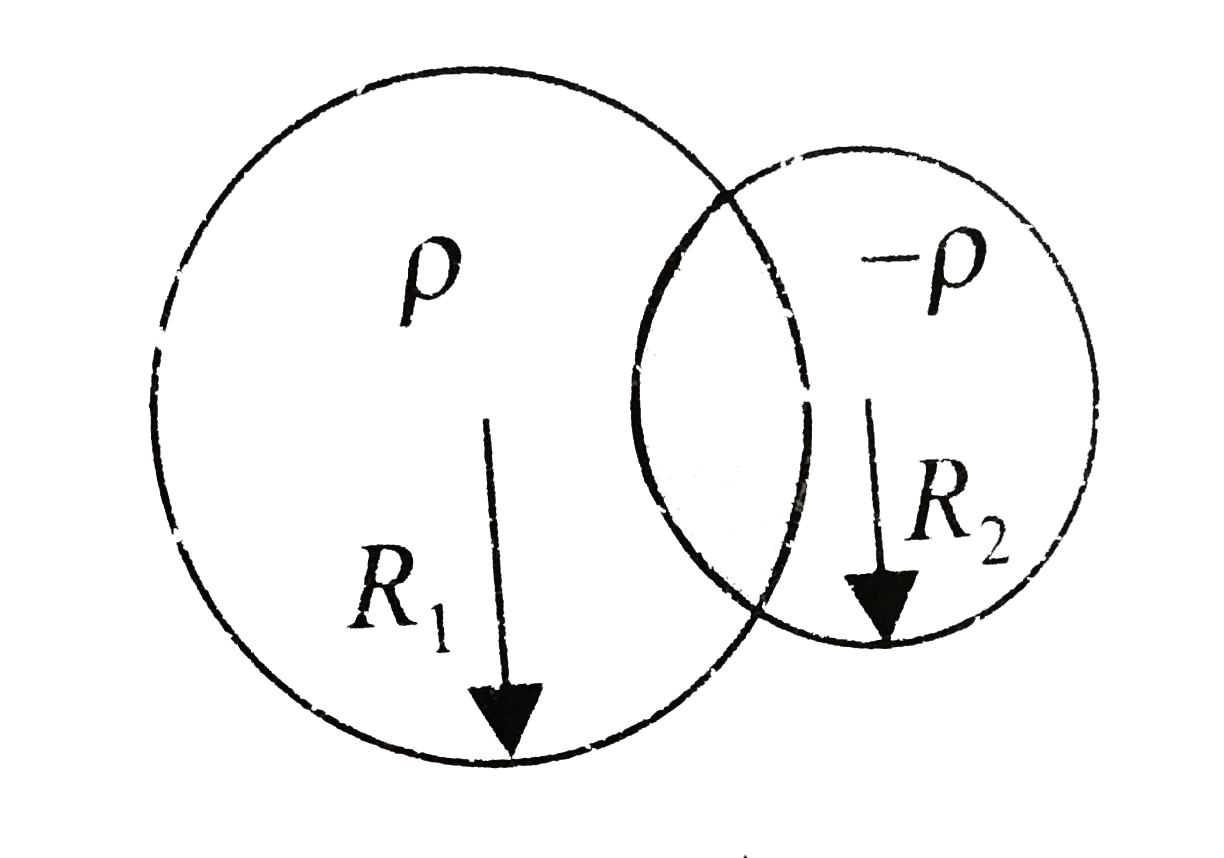
the electrostatic field is zero
the electrostatic potential is constant
the electrostatic field is constant in magnitude
the electrostatic field has same direction
The correct Answer is:C, D
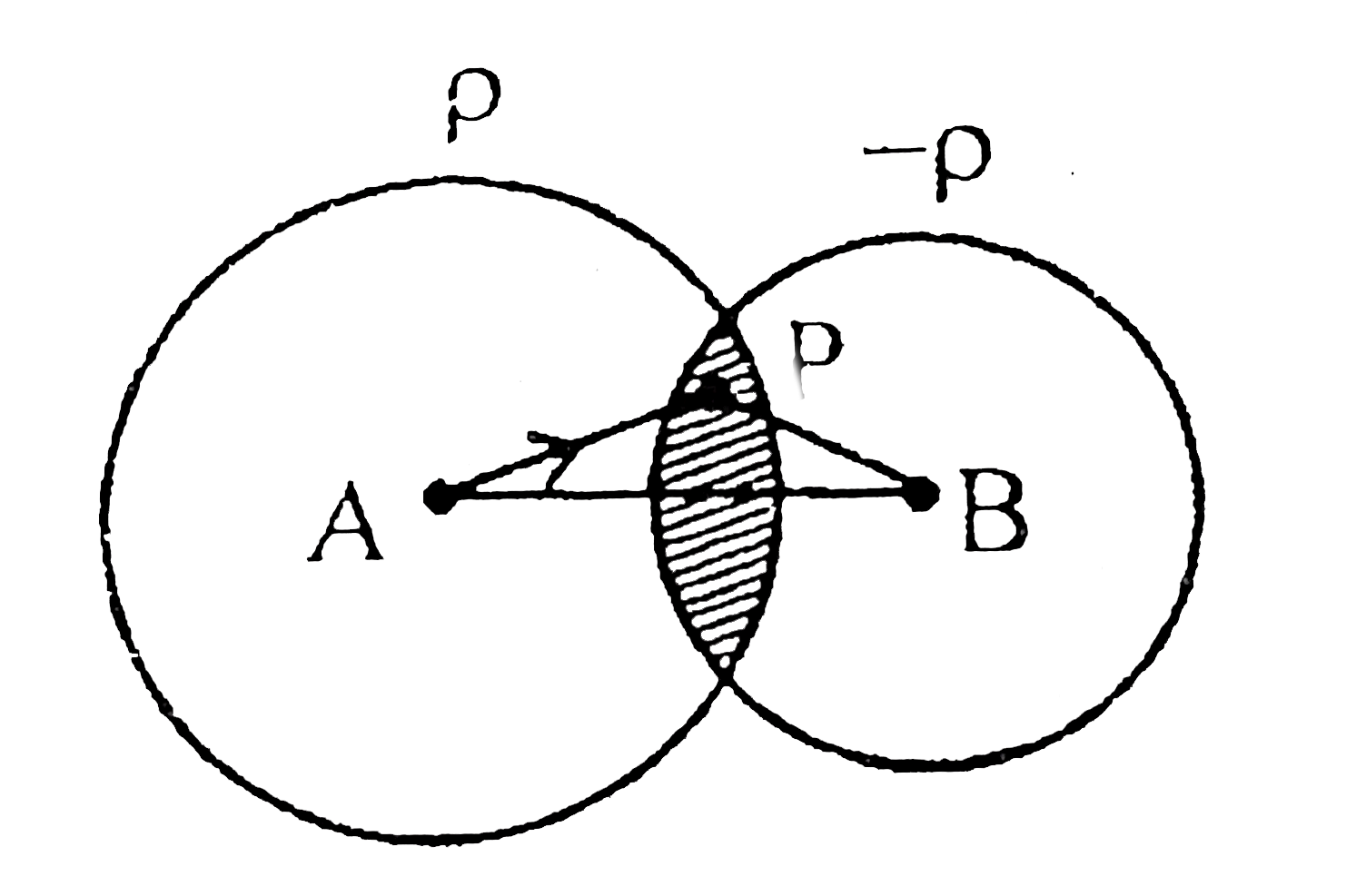
electric field at point P
=ρ(−−→AP)3∈0+−ρ(−−→BP)3∈0=ρ(−−→AP−−−→BP)3∈0=ρ(−−→AB)3∈0
= constant in both magnitude and direction at evergy point of overlap region.
also e is non zero so potential is not same at all points.
Topper's Solved these Questions
- MISCELLANEOUSBOOK - ALLENCHAPTER - MISCELLANEOUSEXERCISE - REASONING TYPE
1 Video
- MISCELLANEOUSBOOK - ALLENCHAPTER - MISCELLANEOUSEXERCISE - MATCH THE COLUME TYPE
1 Video
- MISCELLANEOUSBOOK - ALLENCHAPTER - MISCELLANEOUSEXERCISE - Exercise-05(B)
19 Videos
- KINEMATICS (MOTION ALONG A STRAIGHT LINE AND MOTION IN A PLANE)BOOK - ALLENCHAPTER - KINEMATICS (MOTION ALONG A STRAIGHT LINE AND MOTION IN A PLANE)EXERCISE - BEGINNER S BOX-7
8 Videos
- PHYSICAL WORLD, UNITS AND DIMENSIONS & ERRORS IN MEASUREMENT BOOK - ALLENCHAPTER - PHYSICAL WORLD, UNITS AND DIMENSIONS & ERRORS IN MEASUREMENT EXERCISE - EXERCISE-IV
8 Videos
Similar Questions
Two non-conducting solid spheres of radii R and 2R, having uniform volume charge densities ρ1 and ρ2 respectively, touch each other. The net electric field at a distance 2R from the centre of the smaller sphere, along the line joining the centres of the spheres, is zero. The ratio ρ1ρ2 can be
View SolutionTwo charged spheres of radii R1andR2 having equal surface charge density. The ratio of their potential is
View SolutionTwo concentric conducting shells of radii R and 2R are having charges Q and -2Q respectively.In a region r
View SolutionThere are two nonconducting spheres having uniform volume charge densities ρ and −ρ . Both spheres have equal radius R. The spheres are now laid down such that they overlap as shown in Fig.2.125. Take →d=O1−→O2.
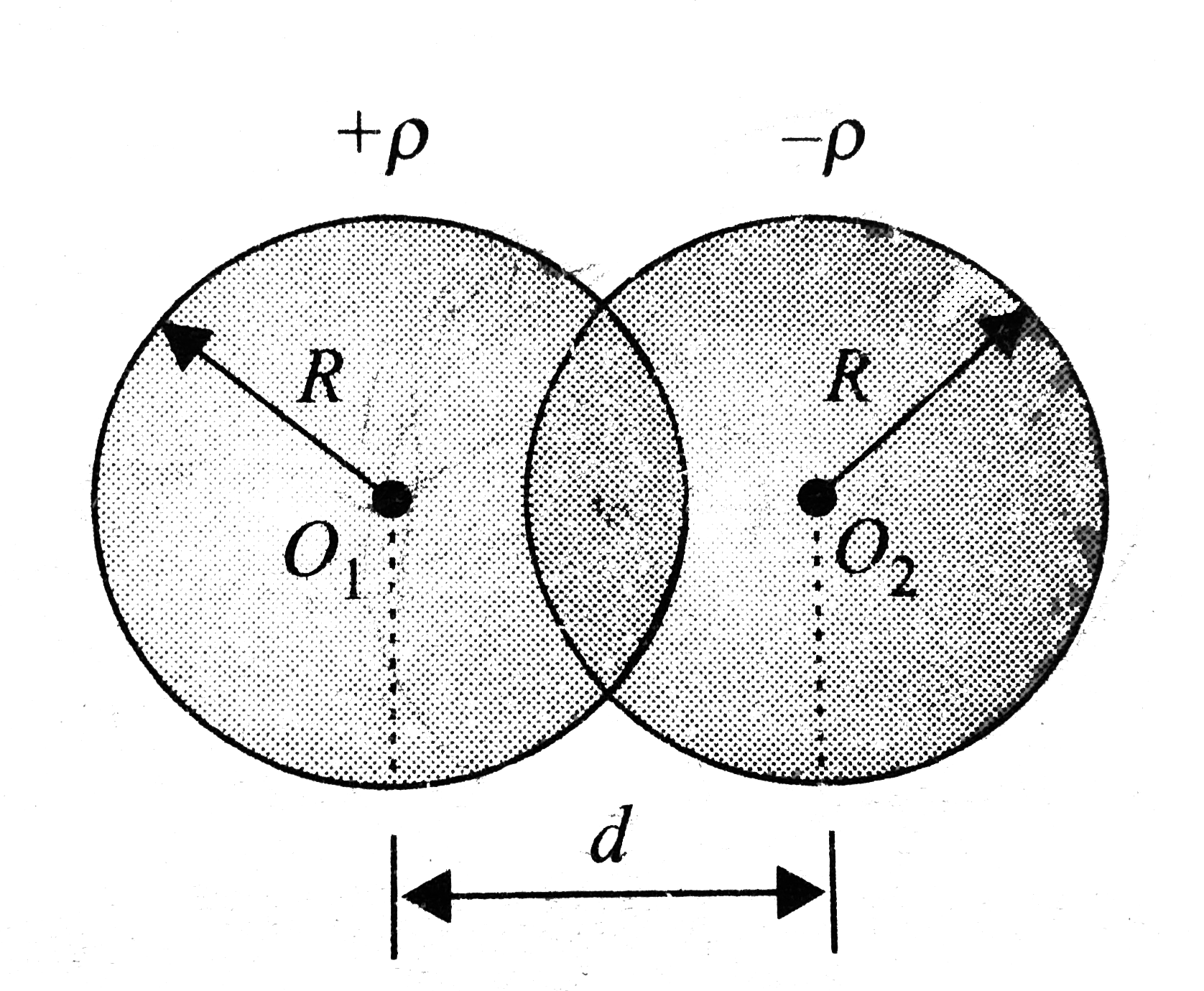
The electric field →E in the overlapped region is
View SolutionThere are two nonconducting spheres having uniform volume charge densities ρ and −ρ . Both spheres have equal radius R. The spheres are now laid down such that they overlap as shown in Fig.2.125. Take →d=O1−→O2.

The electric field →E in the overlapped region is
View SolutionThere are two nonconducting spheres having uniform volume charge densities ρ and −ρ . Both spheres have equal radius R. The spheres are now laid down such that they overlap as shown in Fig.2.125. Take →d=O1−→O2.
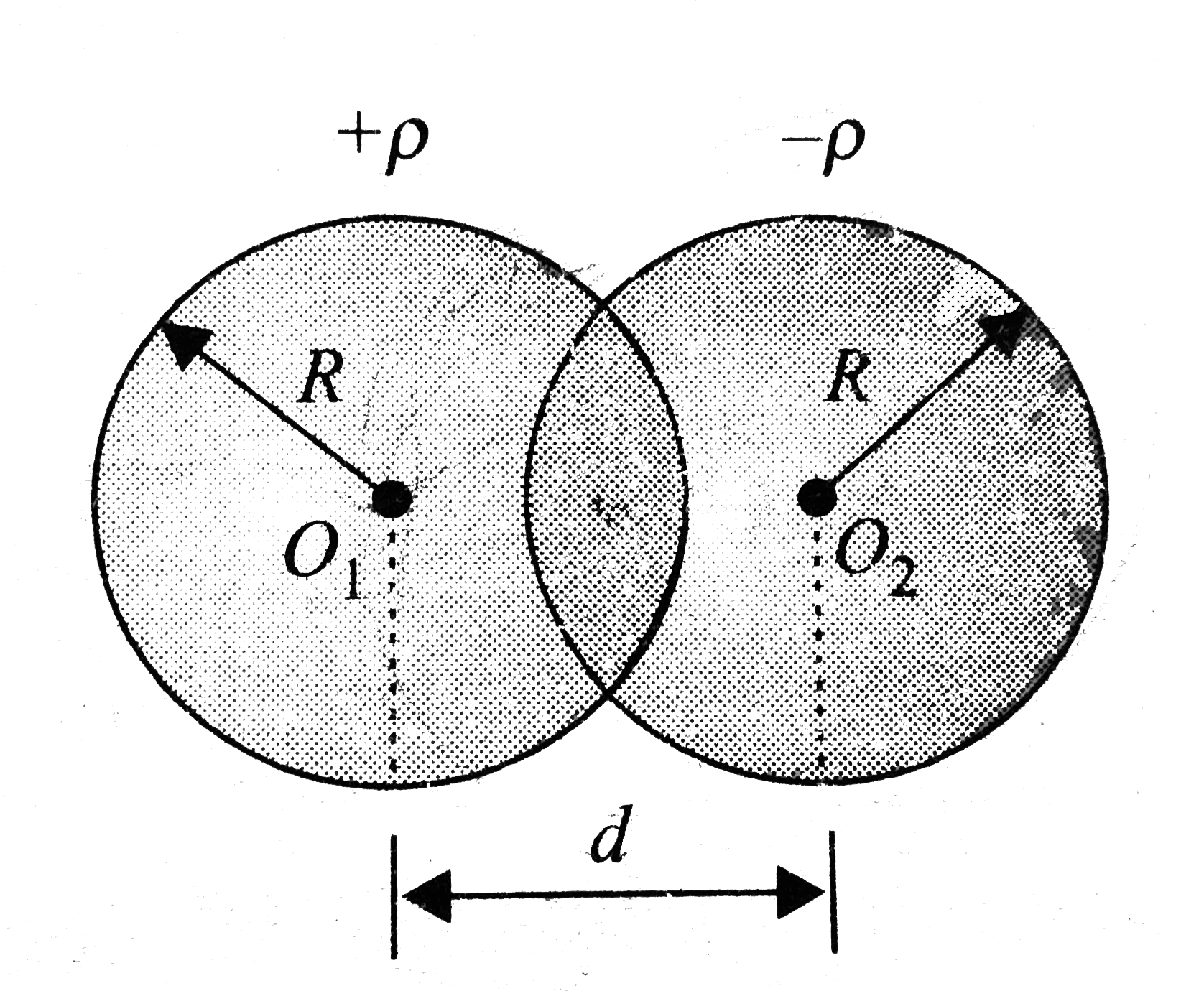
The potential difference ΔV between the centres of the two spheres for d=R is
View SolutionA nonconducting sphere of radius R is filled with uniform volume charge density −ρ. The center of this sphere is displaced from the origin by →d. The electric field →E at any point P having position vector inside the sphere is
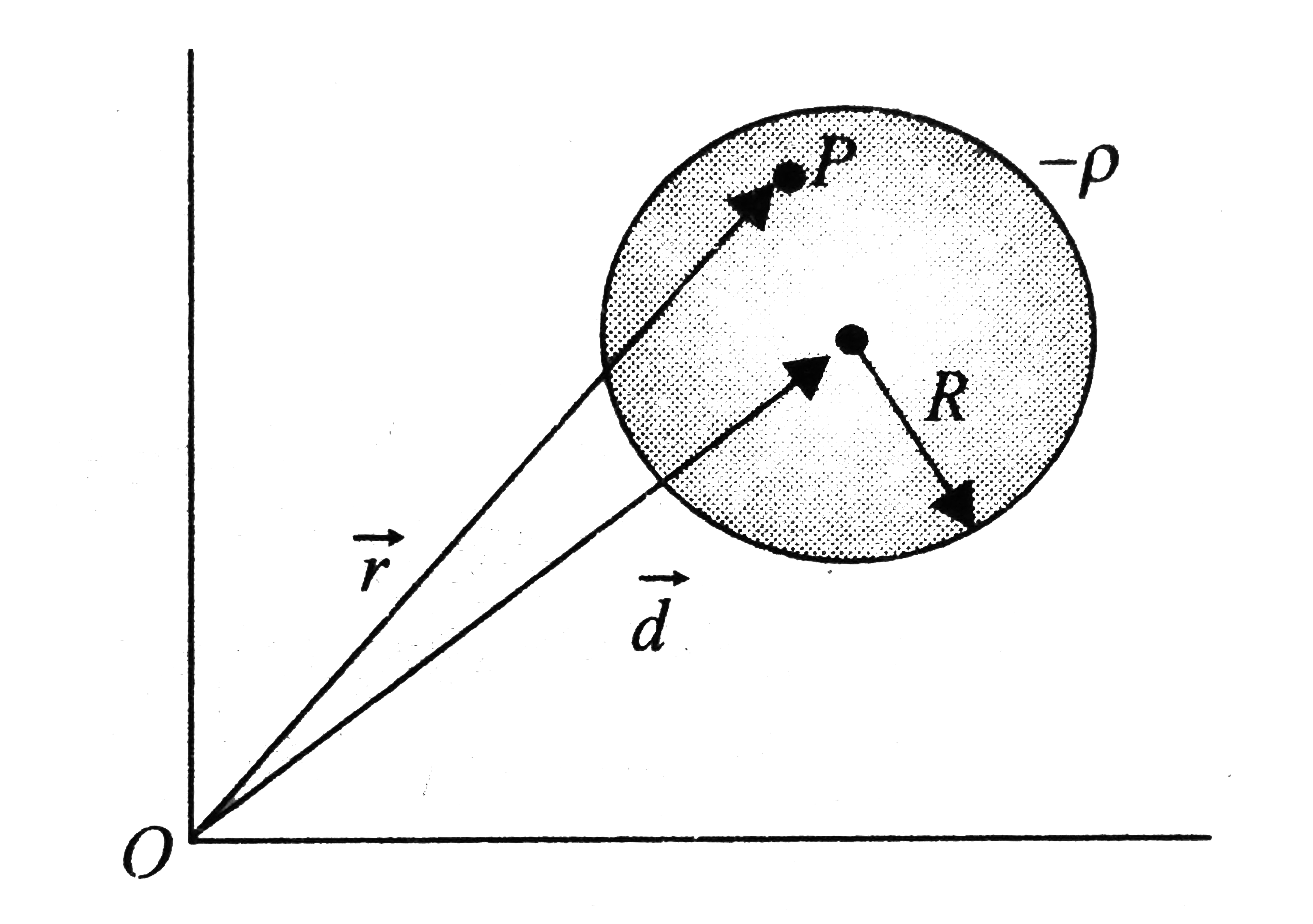
View SolutionIf two liquids of same mass but densities ρ1 and ρ2 respectively are mixed, then the density of the mixture is:
View SolutionTwo spheres A and B of equal radii R, each are uniformly dense with densities 2ρ and rho respectively are placed as shown in figure.The initial acceleration of particle placed at point P due to gravity of both the spheres will be (P is just above the surface of sphere B).
View SolutionA Uniformly charged solid non-conducting sphere of uniform volume charge density ρ and radius R is having a concentric spherical cavity of radius r. Find out electric field intensity at following points, as shown in the figure :
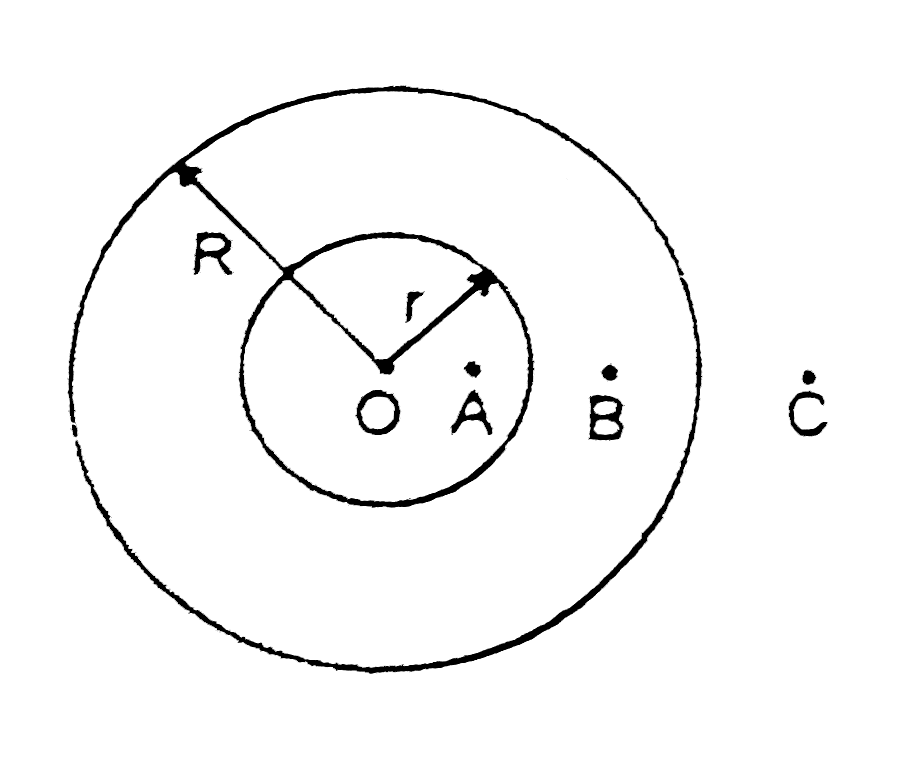
(i) Point A (ii) Point B
(iii) Point C (iv) Centre of the sphere
View Solution
